VW Golf VS Ford Puma – Specs, Efficiency & Price Comparison
Which model is the better choice – the VW Golf or the Ford Puma? We compare performance (333 HP vs 168 HP), boot capacity (381 L vs 523 L), efficiency (0.30 L vs 13.10 kWh5.40 L), and of course, the price (24300 £ vs 24800 £).
Find out now which car fits your needs better!
The VW Golf (Hatchback) is powered by a Petrol MHEV, Petrol, Diesel or Plugin Hybrid engine and comes with a Automatic or Manuel transmission. In comparison, the Ford Puma (SUV) features a Petrol MHEV or Electric engine and a Manuel or Automatic gearbox.
When it comes to boot capacity, the VW Golf offers 381 L, while the Ford Puma provides 523 L – depending on what matters most to you. If you’re looking for more power, you’ll need to decide whether the 333 HP of the VW Golf or the 168 HP of the Ford Puma suits your needs better.
There are also differences in efficiency: 0.30 L vs 13.10 kWh5.40 L. In terms of price, the VW Golf starts at 24300 £, while the Ford Puma is available from 24800 £.
Compare all the key specs now and find out which model fits your lifestyle best!
In the competitive arena of compact cars, the Ford Puma and VW Golf stand out for their exceptional blend of style and performance. The Puma impresses with its sporty design and agile handling, while the Golf continues to be a benchmark for interior quality and tech features. Ultimately, choosing between these two vehicles may come down to personal preference, as both offer unique strengths tailored to different driving tastes.
VW Golf
Der VW Golf überzeugt seit Jahrzehnten durch seine Vielseitigkeit und seine ausgewogene Mischung aus Komfort und Dynamik. Mit seinem zeitlosen Design und der hochwertigen Verarbeitung ist er ein treuer Begleiter im Alltag. Besonders beliebt ist der Golf wegen seiner innovativen Technologie und der großen Auswahl an Varianten, die für jeden Bedarf das passende Modell bietet.
details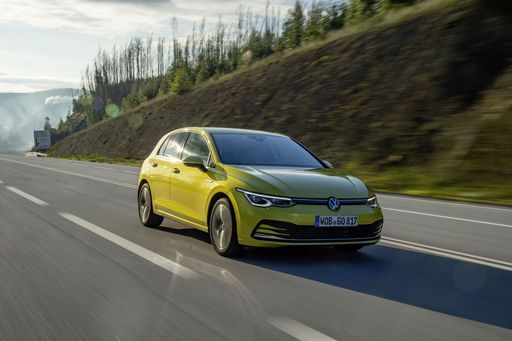 @ Volkswagen
@ Volkswagen
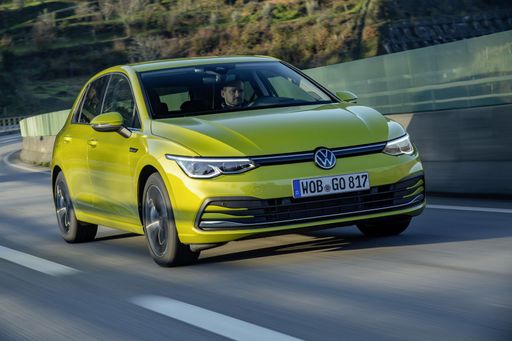 @ Volkswagen
@ Volkswagen
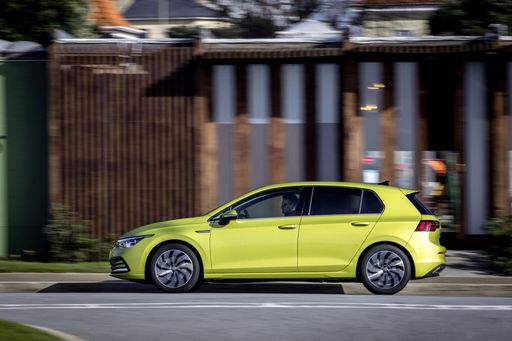 @ Volkswagen
@ Volkswagen
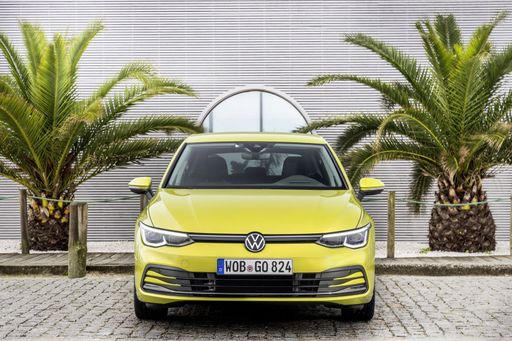 @ Volkswagen
@ Volkswagen
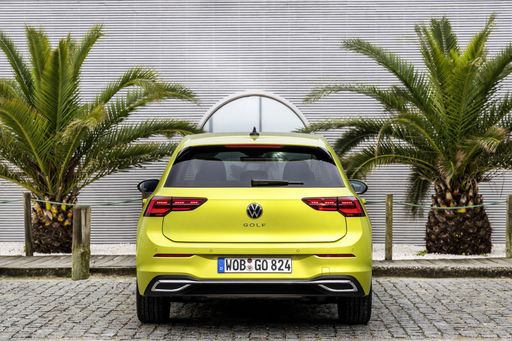 @ Volkswagen
@ Volkswagen
 @ Volkswagen
@ Volkswagen
 @ Volkswagen
@ Volkswagen
Ford Puma
The Ford Puma presents itself as a stylish compact SUV with a distinctive design that combines practicality with a dynamic driving experience. Its sleek lines and sporty aesthetics make it stand out on the road, while the interior offers a comfortable and tech-savvy environment. With an emphasis on efficiency and a smooth drive, the Ford Puma is well-suited for both urban commutes and countryside adventures.
details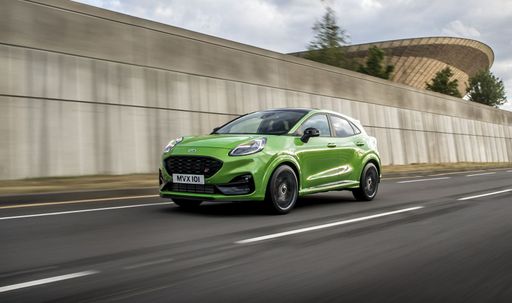 @ puma.fordpresskits.com
@ puma.fordpresskits.com
 @ puma.fordpresskits.com
@ puma.fordpresskits.com
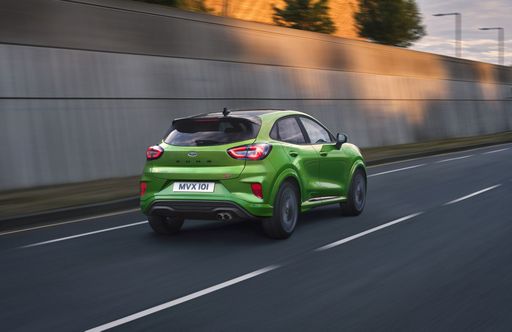 @ puma.fordpresskits.com
@ puma.fordpresskits.com
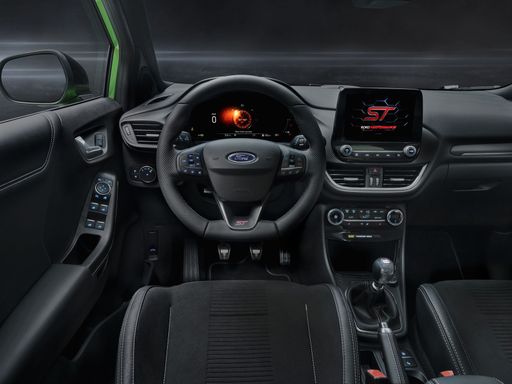 @ puma.fordpresskits.com
@ puma.fordpresskits.com
The automotive world is constantly evolving, with manufacturers vying for a competitive edge through innovative designs and technology. In this article, we’ll take a closer look at two popular contenders in the compact car segment: the Ford Puma and the Volkswagen Golf. Each model brings a unique set of strengths, catering to diverse driving preferences and lifestyles.
Body Style and Design
The Ford Puma is classified as a compact SUV, featuring a more robust and elevated design. Its sporty silhouette and dynamic lines make it appealing to those seeking both functionality and style. The Puma offers a spacious interior that supports a five-seat configuration, making it practical for families or individuals needing extra room.
In contrast, the Volkswagen Golf is a staple hatchback that possesses a more traditional car aesthetic. Known for its refined elegance, the Golf combines versatility with a sleek design that appeals to a broad audience. Like the Puma, it also accommodates five passengers comfortably, though its trunk space is slightly smaller.
Performance and Engine Options
The Ford Puma offers a range of petrol engines, including mild-hybrid variants that enhance fuel efficiency. The engines produce anywhere from 125 to 168 horsepower, providing varied performance levels. The Puma also features a front-wheel-drive layout, ensuring a responsive driving experience. Notably, its acceleration times range from 7.4 to 9.8 seconds for 0 to 100 km/h, with top speeds reaching up to 210 km/h.
On the other hand, the Volkswagen Golf provides a broader spectrum of engine options, including petrol, diesel, and plug-in hybrid variants, with outputs reaching as high as 333 horsepower. The Golf also offers both front-wheel and all-wheel-drive configurations, accommodating different driving needs. Acceleration capabilities are impressive, with some variants clocking in at 4.6 seconds for the 0 to 100 km/h sprint, pushing its top speed to an exhilarating 270 km/h.
Fuel Efficiency and Emissions
When it comes to efficiency, the Ford Puma stands out with its mild-hybrid technology, allowing it to achieve consumption figures of 5.4 to 6 L/100 km. The lower CO2 emissions ratings will appeal to eco-conscious drivers, with figures ranging from 121 g/km to 129 g/km.
The Volkswagen Golf excels in this department as well, with consumption ratings as low as 4.3 L/100 km for some diesel and hybrid models. Its CO2 emissions vary from 113 g/km to 192 g/km, depending on the engine configuration. This broad spectrum in engine choices ensures that buyers can select a variant aligning with their environmental commitments.
Innovative Features and Technology
Ford has integrated several advancements in the Puma, including the latest infotainment system that boasts a user-friendly interface and seamless smartphone connectivity. Safety features are abundant, with various driver-assist technologies enhancing the driving experience, such as lane-keeping assist and adaptive cruise control. Additionally, the Ford Puma's design incorporates practical features like a spacious trunk that can accommodate bulky items, thanks to its “MegaBox” storage solution.
The Volkswagen Golf, on the other hand, continues to evolve with cutting-edge technology. Its infotainment system is highly regarded for its responsiveness and rich feature set, including augmented reality navigation. Safety and driver assistance are also top-notch, with features like emergency braking and adaptive lighting, ensuring a secure ride. Furthermore, the Golf boasts an impressive interior quality, showcasing premium materials that provide a comfortably upscale feel.
Conclusion: Which One Reigns Supreme?
Choosing between the Ford Puma and Volkswagen Golf ultimately depends on individual priorities. If you seek a compact SUV with a practical approach and innovative storage solutions, the Puma stands out as a solid choice. Meanwhile, if performance, a wider range of engine options, and a touch of luxury are at the top of your list, the Golf may be the better fit.
Both vehicles offer commendable features, striking a balance between practicality and performance. Regardless of your choice, both the Ford Puma and Volkswagen Golf promise fulfilling driving experiences that cater to modern needs.

|

|
|
|
|
Costs and Consumption |
|
|---|---|
|
Price
24300 - 51100 £
|
Price
24800 - 36300 £
|
|
Consumption L/100km
0.3 - 8.2 L
|
Consumption L/100km
5.4 - 6 L
|
|
Consumption kWh/100km
-
|
Consumption kWh/100km
13.1 - 13.7 kWh
|
|
Electric Range
131 - 143 km
|
Electric Range
364 - 376 km
|
|
Battery Capacity
19.70 kWh
|
Battery Capacity
43 kWh
|
|
co2
6 - 186 g/km
|
co2
0 - 136 g/km
|
|
Fuel tank capacity
40 - 55 L
|
Fuel tank capacity
42 L
|
Dimensions and Body |
|
|---|---|
|
Body Type
Hatchback
|
Body Type
SUV
|
|
Seats
5
|
Seats
5
|
|
Doors
5
|
Doors
5
|
|
Curb weight
1307 - 1668 kg
|
Curb weight
1316 - 1563 kg
|
|
Trunk capacity
273 - 381 L
|
Trunk capacity
456 - 523 L
|
|
Length
4282 - 4296 mm
|
Length
4186 - 4226 mm
|
|
Width
1789 mm
|
Width
1805 mm
|
|
Height
1454 - 1483 mm
|
Height
1550 - 1555 mm
|
|
Payload
431 - 508 kg
|
Payload
367 - 469 kg
|
Engine and Performance |
|
|---|---|
|
Engine Type
Petrol MHEV, Petrol, Diesel, Plugin Hybrid
|
Engine Type
Petrol MHEV, Electric
|
|
Transmission
Automatic, Manuel
|
Transmission
Manuel, Automatic
|
|
Transmission Detail
Automat. Schaltgetriebe (Doppelkupplung), Schaltgetriebe
|
Transmission Detail
Schaltgetriebe, Automat. Schaltgetriebe (Doppelkupplung)
|
|
Drive Type
Front-Wheel Drive, All-Wheel Drive
|
Drive Type
Front-Wheel Drive
|
|
Power HP
116 - 333 HP
|
Power HP
125 - 168 HP
|
|
Acceleration 0-100km/h
4.6 - 10.2 s
|
Acceleration 0-100km/h
7.4 - 9.8 s
|
|
Max Speed
202 - 270 km/h
|
Max Speed
160 - 210 km/h
|
|
Torque
220 - 420 Nm
|
Torque
170 - 290 Nm
|
|
Number of Cylinders
4
|
Number of Cylinders
3
|
|
Power kW
85 - 245 kW
|
Power kW
92 - 124 kW
|
|
Engine capacity
1498 - 1984 cm3
|
Engine capacity
999 cm3
|
General |
|
|---|---|
|
Model Year
2024
|
Model Year
2024 - 2025
|
|
CO2 Efficiency Class
D, C, B, F, G
|
CO2 Efficiency Class
D, E, A
|
|
Brand
VW
|
Brand
Ford
|
VW Golf
VW Golf: Ein Evergreen mit innovativer Technik
Seit Jahrzehnten gilt der Volkswagen Golf als der Inbegriff des zuverlässigen Kompaktwagens. Doch der neueste VW Golf zeigt sich nicht nur als bewährter Alltagsheld, sondern auch als Fortführer technologischer Innovationen. Ob Benzin, Diesel oder Hybrid – der Golf bietet für jede Präferenz die passende Antriebsform und bleibt dabei stets am Puls der Zeit.
Antriebsvarianten: Vielfalt für jeden Fahrertyp
Der VW Golf ist in einer beeindruckenden Bandbreite von Antriebsvarianten erhältlich, die von klassischen Benzinmotoren über effiziente Diesel-Aggregate bis hin zu modernen Hybrid-Antrieben reichen. Insbesondere die Mild-Hybrid und Plug-In-Hybrid Modelle stellen einen herausragenden Fortschritt in Sachen Kraftstoffeffizienz und CO2-Reduktion dar. Mit einem Verbrauch von nur 0,3 L/100 km bei den Plug-In-Hybrid Varianten und einer elektrischen Reichweite von bis zu 137 km setzt der Golf Maßstäbe in seiner Klasse.
Leistung und Effizienz
Das Leistungsspektrum des Golf erstreckt sich von effizienten 116 PS bis hin zu kraftvollen 333 PS im Golf R, der mit Allradantrieb und sportlicher Dynamik beeindruckt. Vielfältige Auswahlmöglichkeiten bei Getriebearten, von manuell bis zum modernen Doppelkupplungsgetriebe (DSG), bieten zusätzliche Flexibilität für unterschiedliche Fahrstile und Nutzungsszenarien.
Technologie und Innovation
Die neuesten Golf-Modelle sind mit fortschrittlicher Technologie ausgestattet, die Komfort und Sicherheit auf ein neues Niveau hebt. Das Interieur glänzt mit einem modernen Infotainmentsystem, umfassender Konnektivität und innovativen Fahrerassistenzsystemen. Das Head-up-Display, adaptive Fahrwerksregelung und die intelligente Verkehrszeichenerkennung sind nur einige der Features, die den Golf zu einem der technologisch führenden Fahrzeuge in seinem Segment machen.
Design und Funktionalität
Der VW Golf kombiniert bewährtes Design mit funktionalen Verbesserungen. Das sportliche, aber dennoch elegante Schrägheck bietet großzügigen Platz, wobei der Kofferraum zwischen 273 und 381 Litern zu bieten hat. Die ästhetische Linienführung bei zugleich optimaler Raumausnutzung verleihen dem VW Golf seine typisch zeitlose Eleganz.
Umweltbewusstsein und Nachhaltigkeit
In einer Zeit, in der der bewusste Umgang mit Ressourcen immer wichtiger wird, überzeugt der Golf mit einer hohen Effizienz und geringen Emissionen. Die verfügbaren CO2-Effizienzklassen von B bis G zeigen, dass der Golf auch in puncto Umweltverträglichkeit eine gute Wahl darstellt. Dank der Auswahl an ressourcenschonenden Antrieben trägt der Golf zur Reduzierung des ökologischen Fußabdrucks bei.
Fazit: Der VW Golf bleibt ein Bestseller
Mit stetiger Weiterentwicklung in Technik und Design bleibt der VW Golf ein Dauerbrenner auf dem Automobilmarkt. Seine Vielseitigkeit in Antriebsarten, gepaart mit modernem Komfort und zukunftsweisender Technologie, macht ihn zu einem Fahrzeug, das nicht nur treue Fans begeistert, sondern auch neue Kunden anspricht. Der Golf bleibt ein Symbol für Zuverlässigkeit und Innovation in einem sich stetig wandelnden Markt.
Ford Puma
A Glimpse into the Ford Puma: Fusing Style with Innovation
The Ford Puma stands as a testament to modern engineering fused with style. This compact SUV is not just about aesthetics but brings to the table an array of technical innovations, topped with the reliability and performance Ford is known for. Let's delve into the technical specifics and innovative features that make the Ford Puma a stellar choice for any car enthusiast.
Powertrains and Performance
The Ford Puma is offered with a range of powertrains designed to deliver optimal performance whilst minimising fuel consumption. At the heart of this compact SUV is the 1.0 EcoBoost Hybrid engine, available in both 125 PS and 155 PS variants. This engine is a marvel of engineering, optimised to deliver power efficiently with a remarkable fuel consumption ranging from 5.4 to 5.7 L/100km for manual versions, and slightly higher for the automated variants.
The top-end 1.5 EcoBoost ST variant takes performance up a notch, providing a robust 200 PS that propels the Puma from 0 to 100 km/h in just 6.7 seconds. This variant is perfect for those who prioritise performance and exhilaration in their driving experience.
Mild-Hybrid Technology
The Puma's mild-hybrid technology plays a significant role in enhancing fuel efficiency and reducing emissions. By utilising a belt-driven integrated starter/generator, the Puma recovers energy usually lost during braking, storing it in a 48-volt lithium-ion battery. This stored energy is then used to assist the engine, providing a boost during acceleration and smoothing out the stop-start technology, ultimately leading to enhanced fuel efficiency.
Design and Comfort
The Ford Puma does not compromise on style and comfort with its ergonomic and stylish design. The SUV is available in multiple trims including the ST-Line, Titanium, and the luxurious Vignale editions, each offering unique aesthetic and technological enhancements. These trim levels provide varied offerings in terms of both exterior styling and interior comfort, ensuring there's a Puma that meets every personal preference.
Inside, the Puma offers a driver-focused cockpit with advanced technological integrations such as the SYNC 3 infotainment system, providing seamless connectivity and intuitive control of the vehicle's numerous technological features.
Safety and Technology
Safety remains paramount, and the Ford Puma is equipped with the latest security and technology features. It boasts the Ford Co-Pilot360 suite which includes adaptive cruise control, pre-collision assist with autonomous emergency braking, and lane-keeping assist, enabling a safer driving experience on both city roads and highways.
Versatility and Practicality
Beyond performance and safety, the Ford Puma shines in its versatility. With a boot capacity of 456 litres, it offers ample space for all sorts of adventures, whether you're heading on a family trip or loading sports equipment. Its innovative MegaBox is an extra storage solution, providing additional space below the boot floor.
The Puma's agile handling, paired with its compact dimensions—spanning a length of 4186 to 4266 mm and a width of 1805 mm—makes it an ideal choice for urban commuting and beyond.
Conclusion
In conclusion, the Ford Puma beautifully blends practical features with cutting-edge technology, offering a package that appeals to both the tech-savvy driver and those seeking comfort and reliability. Its range of innovative features, powerful yet efficient engine options, and a design that is both functional and stylish make it a frontrunner in the compact SUV market.
Whether you're drawn by the efficient mild-hybrid engines or the robust performance of the ST variant, the Ford Puma represents a modern driving experience where innovation meets everyday usability.
The prices and data displayed are estimates based on German list prices and may vary by country. This information is not legally binding.
